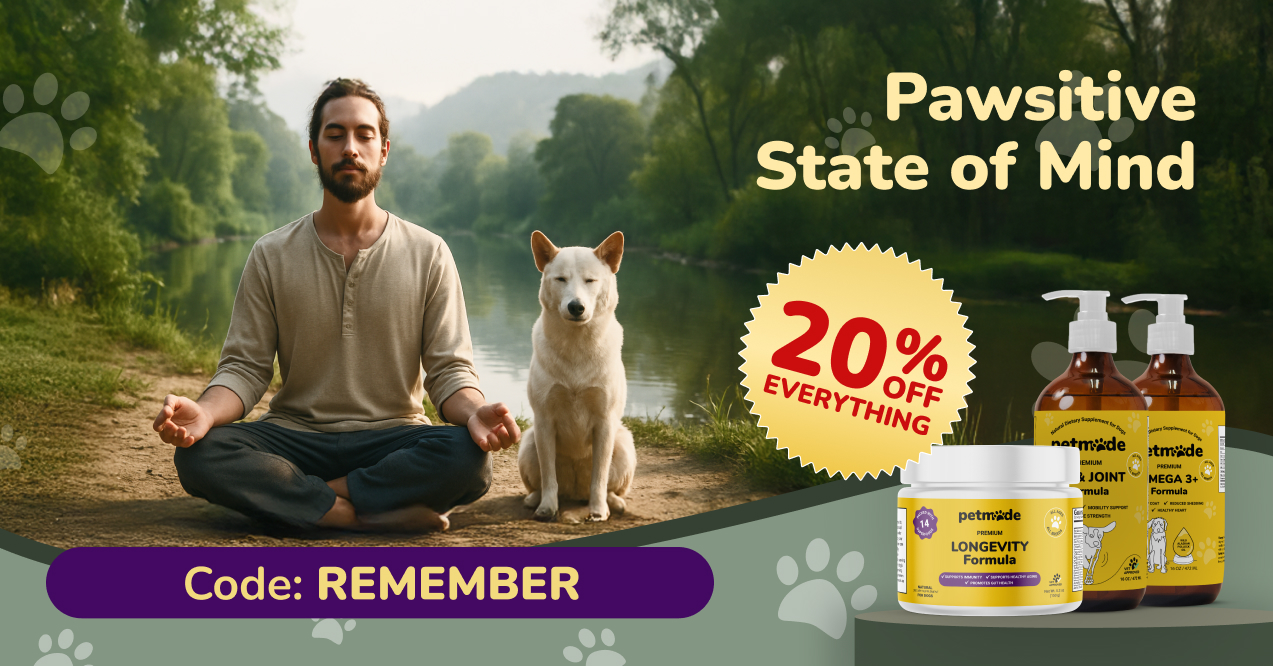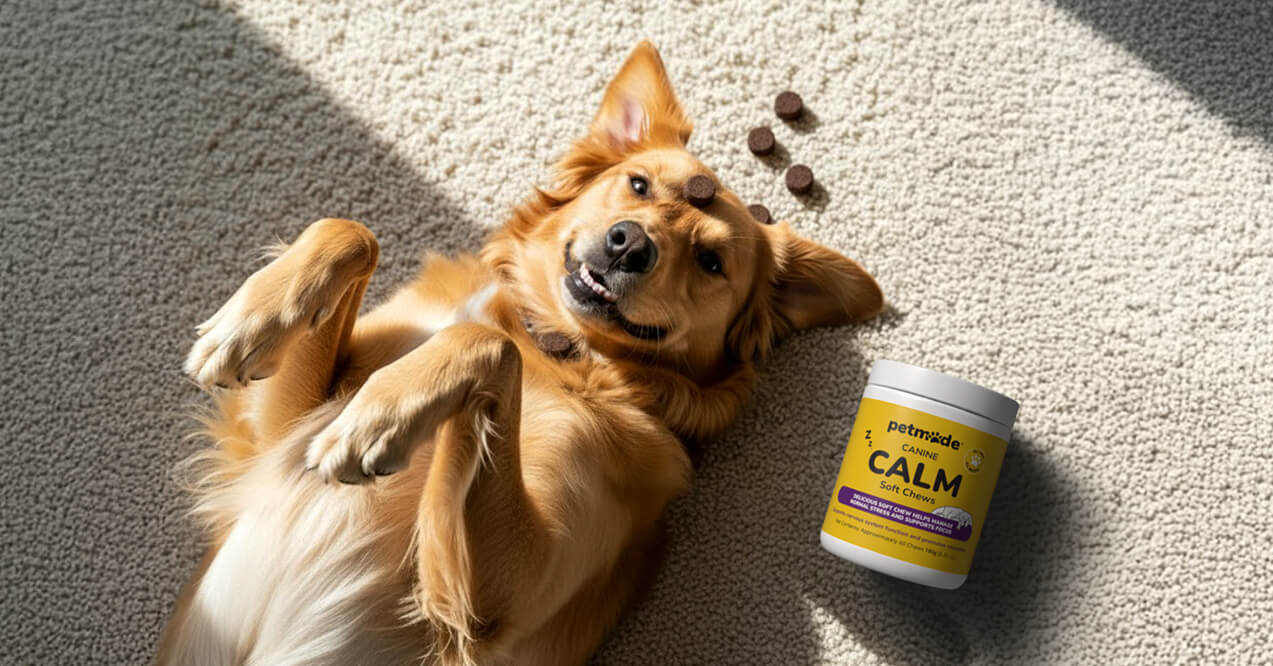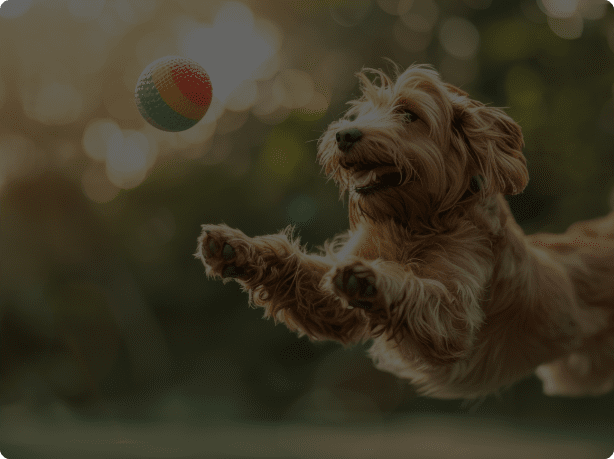Why Dog Meditation Is Becoming Popular Among Pet Owners
Ever catch your dog staring peacefully out the window, totally absorbed in the moment? That’s not just idle time—your pup might be naturally meditating. Dog meditation has exploded in popularity as pet owners discover the secret hiding in plain sight: our dogs already know how to be mindful, and they’re pretty good at it.
What Is Dog Meditation?
It’s a practice that leverages your dog’s natural ability to live in the present moment while helping them focus this awareness in a structured way. Dogs naturally exist in a state many humans try to achieve through meditation—complete presence and attention to the current moment.
Unlike human meditation which often involves complex techniques and philosophies, dog meditation is simpler and more instinctual. It builds on dogs’ inherent ability to be calm and focused when properly guided. The practice creates a shared space where both you and your dog may synchronize your energy and attention.
At its core, dog meditation is about mindful connection. When you sit calmly with your dog and focus on your breathing, they tune into your energy. Dogs are incredibly perceptive to human emotions, and they’ll often mirror your state of mind—when you’re calm, they become calm too.
Benefits of Dog Meditation for Your Pet
For anxious dogs, regular meditation sessions might help lower stress levels and reduce reactive behaviors. Many dogs living in busy households or urban environments experience various stressors throughout their day. Meditation creates a predictable, calm routine that gives their nervous system a chance to reset.
Active dogs with boundless energy may learn to channel their excitement through meditation. While it won’t replace their need for physical exercise, it teaches them to balance activity with moments of stillness. This mental exercise is just as important as physical activity for a well-rounded canine.
How to Start Meditating With Your Dog

The bonding aspect cannot be overstated. When you and your dog breathe together and share a quiet space, you’re communicating on a primal level that strengthens your connection. This shared experience builds trust and deepens your relationship in ways that even play and training can’t always achieve.
1.Create the Right Environment
Starting your dog meditation journey begins with setting up the perfect space. Choose a quiet area in your home with minimal distractions. This could be a corner of your living room or bedroom—anywhere your dog already feels comfortable and secure.
The timing matters significantly. Avoid trying to meditate with your dog right after meals, during high-energy times of day, or when they’re due for a walk. The sweet spot is usually after moderate exercise when they’re pleasantly tired but not exhausted.
Use consistent cues to signal meditation time. This might be a specific mat or blanket, a gentle tone of voice, or dimming the lights. Dogs thrive on routine, and these signals will eventually trigger their “calm mode” automatically.
2. Basic Dog Meditation Techniques
Start with these simple steps to introduce your dog to meditation:
- Ensure your dog knows “sit” and “stay” commands confidently before attempting meditation.
- Begin with just 2-3 minutes of sitting quietly together. Don’t expect perfection—any moment of calm is a win.
- Choose a unique word like “zen” or “calm” that you’ll only use for meditation sessions.
- Your dog will pick up on your breathing patterns. Make your inhales and exhales slightly audible so your dog can tune into your rhythm.
- When your dog sits quietly beside you, offer gentle praise in a soft voice. Eventually, the meditation itself becomes the reward.
As your sessions progress, gradually extend the duration. Most dogs can work up to 10-15 minute sessions with consistent practice.
3. Common Challenges and Solutions
Not every meditation session will go smoothly, especially in the beginning. If your dog gets up and wanders around, gently guide them back to their spot without showing frustration. Consistency is key—your calm reaction teaches them what’s expected.
For especially active dogs, try starting with dynamic meditation. This involves slow, mindful walking where both you and your dog move deliberately and focus on each step. Many high-energy dogs find this easier than sitting still.
Some dogs get overstimulated by touch during meditation. If this happens with your pup, try sitting near each other without physical contact at first. As they become more comfortable with the practice, you can gradually introduce gentle contact.
External noises can be particularly disruptive. Using white noise or soft, consistent background sounds can help mask unexpected disturbances that might break your dog’s concentration.
Advanced Dog Meditation Practices
Once your dog has mastered basic meditation, you can explore more advanced practices:
Group meditation might be surprisingly effective if you have multiple pets. Some dogs actually find it easier to settle when other pets are also calm. Start with your most naturally relaxed pet and allow them to model the behavior for others.
Guided visualization works for some dogs, especially those who respond well to storytelling. Speaking softly about peaceful scenes like meadows or beaches can help guide your dog’s attention when combined with your calm energy.
Sound meditation using gentle instruments like singing bowls might help some dogs focus. Introduce any sounds gradually and at low volume, watching for signs of relaxation rather than distress.
The ultimate goal is to incorporate brief meditation moments throughout your day—before meals, after walks, or during evening wind-down time. These “micro-meditations” of just 1-2 minutes reinforce the practice and make it part of your dog’s natural routine.

PetMade Hip & Joint Formula gives your dog the support they need for comfortable movement. This natural supplement helps maintain joint flexibility and supports mobility, making it easier for your dog to enjoy meditation sessions without discomfort. The carefully selected ingredients work together to promote overall joint health, allowing your dog to move freely whether they’re joining you for meditation or enjoying their daily activities.
Dog Meditation By Age Group
Different age groups have unique needs when it comes to meditation practices:
Age Group Meditation Duration Best Techniques Special Considerations Puppies (0-1 year) 1-3 minutes Movement-based meditation, simple sitting Keep sessions very short; use high-value rewards; focus on building positive associations Adult Dogs (1-7 years) 5-15 minutes Standard sitting meditation, walking meditation Balance with adequate physical exercise; can handle more focused work Senior Dogs (8+ years) 5-20 minutes Gentle contact meditation, relaxation-focused Provide comfortable padding; monitor for joint discomfort; may naturally take to longer sessions
Conclusion
Dog meditation offers a meaningful way to enhance your pet’s wellbeing while strengthening your bond. As World Meditation Day approaches, consider taking those first steps toward a shared mindfulness practice with your furry friend. Start small, stay consistent, and watch as both you and your dog learn to find moments of peace together.
The growing popularity of dog meditation reflects our evolving understanding of canine needs. Beyond physical care, we now recognize the importance of mental and emotional support for our pets.
Yes, all breeds may learn to meditate, though individual temperaments matter more than breed. Naturally calmer dogs may adapt faster, but even high-energy breeds benefit with consistent practice.
Look for relaxed body language—soft eyes, loose muscles, calm breathing. Your dog doesn’t need to be completely still; gentle movement while maintaining a peaceful state is perfectly fine.
Many owners report improvements in separation anxiety after establishing regular meditation. The practice builds confidence and emotional regulation skills that help dogs cope better when alone.
Advertisement. This site offers health, wellness, fitness and nutritional information and is designed for educational purposes only. You should not rely on this information as a substitute for, nor does it replace, professional medical advice, diagnosis, or treatment. If you have any concerns or questions about your health, you should always consult with a physician or other health-care professional. Do not disregard, avoid or delay obtaining medical or health related advice from your health-care professional because of something you may have read on this site. The use of any information provided on this site is solely at your own risk.


















